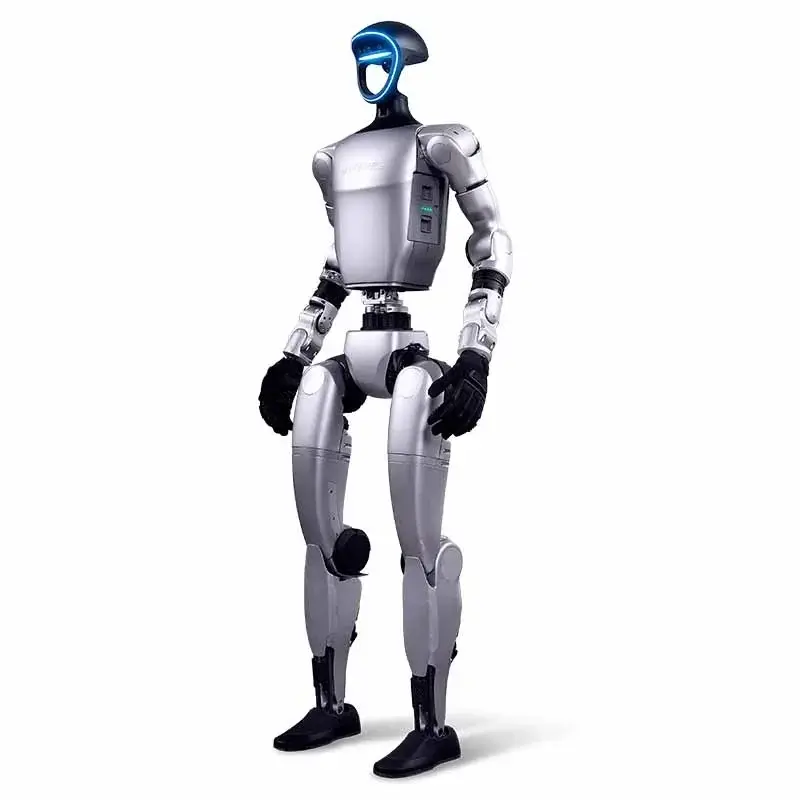The undisputed king of large-scale precision: CNC bridge milling machine
In the world of CNC machining, where precision and efficiency are paramount, certain machine tools stand out for their power and capabilities. Among these giants, CNC bridge mills hold a particularly prominent place, offering an unparalleled combination of size, strength and precision for machining large, complex parts. This article delves into the complexity of CNC bridge milling machines, exploring their design, functionality, applications and benefits, highlighting why they are often the first choice for demanding manufacturing tasks.
Understand the CNC bridge milling machine architecture
The defining feature of CNC bridge milling machines is that it "bridge" structure, a rigid elevated gantry spanning the work area. The bridge supports the machining head, which moves along the machine’s X-axis (longitudinal). The workpiece is usually mounted on a fixed table beneath a bridge mill, but some bridge mills are equipped with a moving table for added versatility. Y-axis movement (lateral) is provided by the movement of the machining head along the bridge, while Z-axis movement (vertical) is controlled by spindles extending up and down from the machining head.
This configuration has several important advantages:
- Superior rigidity: This bridge design inherently provides superior stiffness to resist deflection and vibration during heavy cutting operations. This is critical to maintaining accuracy and achieving tight tolerances, especially when machining large parts.
- Large scope of work: Bridge milling machines are available in a variety of sizes and are capable of handling workpieces up to several meters in length and width. This makes them ideal for industries that handle large components.
- High material removal rate: The robust construction enables bridge mills to take advantage of powerful spindles and aggressive cutting parameters, resulting in high material removal rates and reduced machining times.
- Enhance stability: The fixed table and moving bridge structure above contribute to excellent stability during machining and reduce the potential for vibration problems typically associated with other machine types.
Functionality beyond the basics
While the basic functionality of a CNC bridge mill involves three-axis machining (X, Y, and Z), many modern bridge mills incorporate advanced features and configurations to expand their capabilities:
- Multi-axis machining: Adding a tilt spindle or rotary table enables simultaneous five-axis machining, creating complex geometries and undercuts without the need for multiple setups. This significantly improves efficiency and accuracy.
- Automatic tool changer (ATC): ATC automates tool changes, reducing downtime and increasing productivity, especially for parts that require multiple machining operations using different tools.
- Detection system: Integrated probing systems enable on-machine measurement and inspection, ensuring dimensional accuracy and facilitating adaptive machining strategies. This reduces the need for separate inspection processes and improves overall quality control.
- Pallet changer: The pallet shuttle system increases machine efficiency because it allows one part to be machined while the next part is being loaded.
Cross-industry applications
The versatility and power of CNC bridge mills make them indispensable in various industries:
- aerospace: Machining large structural components of aircraft, such as wing spars, fuselage sections and landing gear parts, where tight tolerances and high material removal rates are critical.
- car: Large molds for manufacturing vehicle body panels as well as powertrain components and chassis elements.
- Heavy equipment: Manufactures large components for use in construction equipment, agricultural machinery and mining equipment where strength and durability are critical.
- vitality: Produces power generation equipment components such as turbine blades, generator casings and wind turbine components.
- Mold: Fabricates large and complex molds and dies for plastic injection molding, die casting and stamping processes.
- ocean: Processing of large marine components such as hull sections, propellers and engine components.
- defense: Manufacturing defense components, such as tank hulls and large artillery parts, where high precision and repeatability are crucial.
Advantages of choosing CNC bridge milling machine
Bridge mills have several distinct advantages over other CNC machining centers:
- Scalability: Bridge mills can be expanded to accommodate very large workpieces, beyond the capabilities of most other machine types.
- Accuracy of large parts: Thanks to its rigid structure and stable design, high precision is maintained even when machining large parts.
- Material Versatility: They can process a wide range of materials, from aluminum and steel to titanium and composites.
- Efficiency of mass production: Their high material removal rates and automation capabilities make them ideal for large-scale production runs.
- Damping capacity: The cast iron or polymer composite base of a bridge mill is vibration-damping, improving the accuracy of machined parts and extending tool life.
Things to note when choosing a CNC bridge milling machine
Choosing the right CNC bridge mill for a specific application requires careful consideration of several factors:
- Scope of work: Determine the maximum dimensions of the workpiece you plan to machine and select a machine with a work range that meets or exceeds those dimensions.
- Spindle power and speed: Choose a spindle that provides enough power and speed for the materials and cutting tools you will be using.
- Number of axes: Determine the complexity of the part you need to machine and choose a machine with the appropriate number of axes.
- Workbench load capacity: Make sure the machine’s table load capacity is sufficient to support the weight of the workpiece.
- Machine footprint: Consider the physical space available in your store and choose a machine that fits that space.
- Control system: Choose a control system that you are familiar with and that provides the features and functionality you need.
- Service and Support: Choose a machine supplier that offers reliable service and support.
The future of CNC bridge milling machines
The future of CNC bridge mills is likely to see continued advancements in automation, precision, and automation. Expect to see wider adoption:
- Artificial Intelligence (AI): AI-driven control systems optimize cutting parameters, predict tool wear and improve overall machining performance.
- Digital twin technology: Create virtual models of machining processes to simulate and optimize machining operations before executing them on real machines.
- Advanced sensor technology: Use advanced sensors to monitor machine performance, tool condition and workpiece accuracy in real time.
- Additive manufacturing integration: Combining additive manufacturing technology with a CNC bridge mill creates a hybrid machine capable of adding and subtracting material.
in conclusion
CNC bridge mills represent the pinnacle of CNC machining technology, providing unparalleled power, precision and versatility for machining large, complex parts. Its robust design, advanced features and wide range of applications make it an indispensable asset in industries that demand the highest performance levels. By carefully considering the specific requirements of your application, you can select the right CNC bridge mill to take your manufacturing operation to new levels of productivity and efficiency. In many cases, it can be helpful to contact a company like GreatLight, a specialist five-axis CNC machining manufacturer, to help you solve your part manufacturing needs with advanced equipment and expertise.
Frequently Asked Questions (FAQ)
Q: What is the main difference between CNC bridge milling machine and CNC gantry milling machine?
A: While these terms are often used interchangeably, there may be subtle differences depending on the manufacturer. Generally speaking, both are bridge structures. However, some people believe that gantry milling machines focus more on moving the entire machine structure on a fixed workpiece, while bridge milling machines usually have the workpiece fixed to the workbench. Functional differences are usually negligible.
Q: What types of materials can the CNC bridge milling machine process?
A: CNC bridge mills can machine a variety of materials, including aluminum, steel, stainless steel, titanium, composites, plastics, and even stone, depending on the machine configuration and tooling.
Q: What is the typical accuracy of a CNC bridge mill?
A: The accuracy of a CNC bridge mill depends on several factors, including the design, construction and calibration of the machine. However, a well-maintained bridge mill can usually achieve an accuracy of ±0.001 inch or better.
Q: How much does a CNC bridge milling machine cost?
A: The cost of a CNC bridge mill varies greatly based on its size, features, and functionality. Smaller bridge mills start at about $200,000, while larger, more complex machines can cost millions.
Q: What type of maintenance does a CNC bridge mill require?
A: Regular maintenance is critical to ensuring the long-term reliability and accuracy of your CNC bridge mill. This includes tasks such as lubrication, cleaning, inspection and calibration. It is important to follow the manufacturer’s recommended maintenance schedule.
Q: Can a CNC bridge milling machine be used for roughing and finishing at the same time?
Answer: Yes, CNC bridge milling machines can be used for roughing and finishing. The machine’s rigidity and power allow it to handle large amounts of material removal during roughing, while its precision and control enable fine surface finishes during finishing.
Q: What are the advantages of five-axis machining of CNC bridge milling machine?
A: Five-axis machining on a CNC bridge mill offers several advantages, including the ability to machine complex geometries, reducing the number of setups required, improving surface finish, and reducing machining time.










































